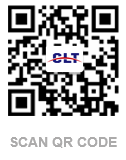Welcome to our website
Copyright© 2019 Dongguan Changlian New Material Technology Co., ltd 粤ICP备2023093978号 Powered by www.300.cn
CONTACT US
ADD.: Building 1, No. 733, Liaobu Section, Shida Road, Liaobu Town, Dongguan City, Guangdong Province, China
TEL: +86-769-83215622-208
FAX: +86-769-83215608
MOBLIE: 13077809333 (Mr. Lu)
E-MAIL: Rukang.lu@dg-clt.com / wei.xu@dg-clt.com
NEWS INFORMATION
TESTEX interprets the 2014 edition of OEKO-TEX standard 100 update
[Abstract]:
TESTEX interprets the 2014 edition of OEKO-TEX standard 100 update
With an increase of 6.3% compared with the previous year and the issuance of more than 125,000 certificates, OEKO-TEX® Standard 100 once again confirmed its important position as the world's leading label for textile hazardous substances inspection.
Summary:
TESTEX interprets the 2014 edition of OEKO-TEX standard 100 update
With an increase of 6.3% compared with the previous year and the issuance of more than 125,000 certificates, OEKO-TEX® Standard 100 once again confirmed its important position as the world's leading label for textile hazardous substances inspection.
As a routine update, the latest adjustments to the OEKO-TEX® Standard 100 testing requirements were released on January 1, 2014. The adjustments are based on continuous market monitoring, new scientific understanding and consideration of REACh regulations, including related textile production Related substances of high concern. The new regulations will come into effect on April 1, 2014 after a transition period of three months.
·For the test of alkylphenol polyoxyethylene ethers (APEOs), the polyoxyethylene ether chain n of OP(EO)n and NP(EO)n was expanded to 1-20. At the same time, in all OEKO-TEX® product grades, the total limit value of octylphenol (OP) and nonylphenol (NP) has been reduced to 10.0 mg/kg, total alkylphenol (OP, NP) and total alkyl The limit value of phenol polyoxyethylene ether AP(EO)n's (n = 1-20) was reduced to 250.0 mg/kg. By reducing the limit value, OEKO-TEX® is committed to completely eliminating nonylphenol (NP), octylphenol (OP) and alkylphenol polyoxyethylene ethers (APEOs) in the textile production process. This is what the entire textile industry must strive for, and it is also one of the goals of Zero Discharge of Hazardous Chemicals (ZDHC) and other environmental protection campaigns.
· Textiles submitted for certification will be tested for four perfluorinated compounds (PFCs), namely perfluoroundecanoic acid (PFUdA), perfluorododecanoic acid (PFDoA), and perfluorotridecanoic acid (PFTrA) ) And perfluorotetradecanoic acid (PFTeA). In the I product level, the limit value of each new perfluorinated compound and perfluorooctanoic acid PFOA is 0.05 mg/kg, the limit value of the II and III product level is 0.1 mg/kg, the limit value of the IV product level It is 0.5 mg/kg. Through the above two measures, OEKO-TEX® expresses special support for the ZDHC initiative of zero discharge of hazardous chemicals. International brands and retailers promise to realize that hazardous chemicals will not be discharged into the environment during the production process in 2020.
·In the polycyclic aromatic hydrocarbons (PAHs) project, the individual limit values of 7 substances have been added, while the total limit values of 24 kinds of polycyclic aromatic hydrocarbons in each product level remain unchanged. The European Union Regulation (EC) No. 1907/2006 (REACh) and (EU) No. 1272/2013 Amendment Annex XVII issued in December will be formally implemented on December 27, 2015. The selected PAH polycyclic aromatic hydrocarbon compounds have been Included in the 2014 edition of OEKO-TEX® Standard 100. It once again demonstrates the pioneering position of OEKO-TEX® Standard 100 in the testing of various textiles and accessories.
·For the test of chlorinated phenol, trichlorophenol (TrCP) will also be included in the OEKO-TEX® test items. The limit value for class I product level is 0.2 mg/kg, and the limit value for product class II to IV is 2.0 mg/kg.
· Direphenol, its salts and acetate will also be included in the list of banned pesticides in OEKO-TEX® Standard 100.
· Regarding softeners, for completeness considerations, CAS number 84777-06-0 will be added to dipentyl phthalate (branched and linear).
·In the OEKO-TEX® Standard 100 solvent residue project, the scope of application of 1-methyl-2-pyrrolidone (NMP) is expanded, and it is also applicable to fibers that are colored before spinning, which are mostly used in the production of personal protective equipment (PPE) .
In view of the growing market importance of OEKO-TEX®, the annual quality control test ratio for all certificates will increase to 25%. OEKO-TEX® Standard 100 certified products adopt random inspection methods and conduct compliance testing after purchasing from the retail market.
Key words:
Scan QR code to view with phone
Previous article:
REACH announced the tenth batch of SVHC


